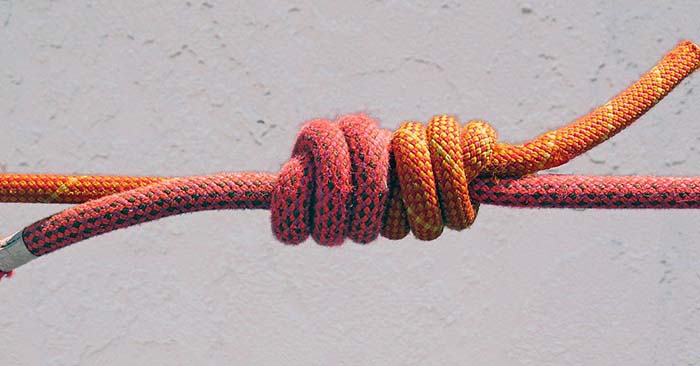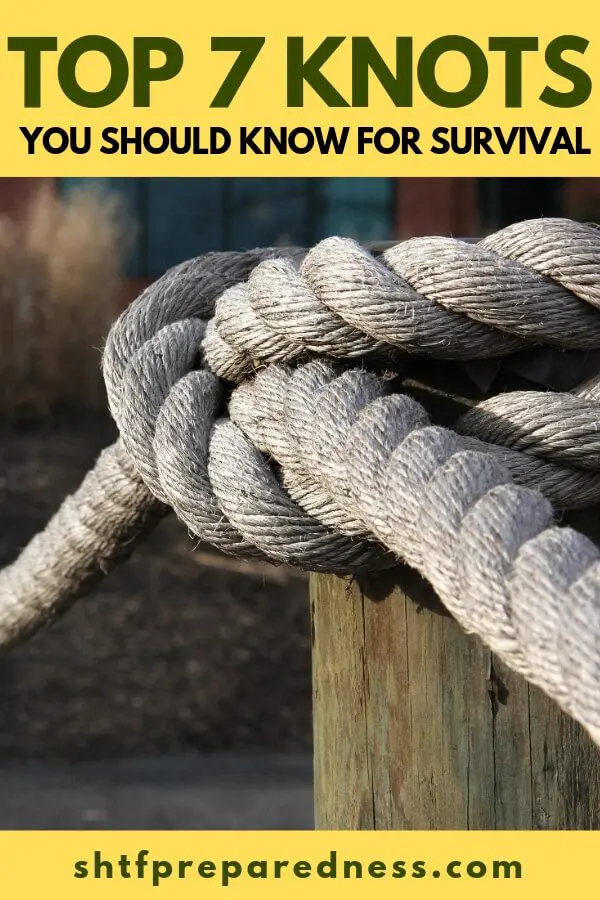A lost skill in modern times is the ability to tie knots. Understanding the proper knot and knowing how to use it will help you solve many difficult problems.
If you spend a lot of time in the wild and building shelter, chances are you have your own repertoire of knots that you use.

We are going to take a look at 7 of the best knots that you should know for survival. These are all great options if you are looking to build your bushcraft skills.
Of the many different things that you can do to build your skills, knots can help you on many levels.
Two-Half Hitches
A very basic knot that has tons of uses, two-half hitches are great for tying your ridgeline.
Fisherman’s Knot
This is the knot you want to know if you are joining two different pieces of cordage together. The name is fitting, as fishermen often combine tippet and other fishing lines.
Prusik Knot
The Prusik knot is something that can really help with setting up your hammock. This is the best way not to attach other hanging lines to a ridgeline.
Truckers Hitch
The truckers hitch is the most important knot for tightening down a load. This is a great knot for bundling things up and keeping them in place.
Clove Hitch
The clove hitch is the stake knot for the modern-day survivalist or outdoorsman. You can use this knot to tie down a shelter or tent.
Bowline
Your bowline will give you the option of creating a strong loop into a piece of cordage.
Taut Line Hitch
Like the bowline, you can create a powerful loop in your cord but this one can be adjusted. That makes it very valuable.
